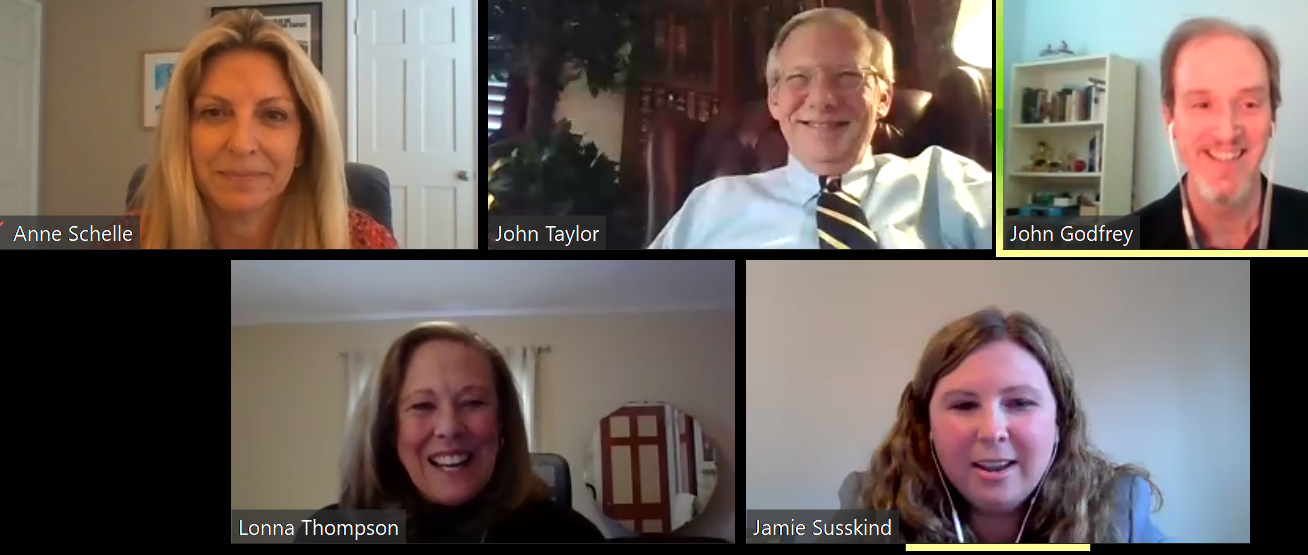ATSC 3.0: Motoring Toward Broadcasting's Future
Webinar features tech companies, broadcasters pondering Next Gen TV
Broadcasters and tech companies are high on the broadband-related prospects of ATSC 3.0, particularly for automotive applications as a near term starter, but ultimately only as a complement to the mothership of a primary TV signal sporting major new upgrades due to that Next Gen TV-branded broadcast transmission standard.

That was one of the takeaways from a combined National Association of Broadcasters/Consumer Technology Association webinar on the future of ATSC 3.0, prefaced by a speech from FCC Commissioner Brendan Carr signaling the FCC would help broadcasters team up to add that broadband element.
Related: FCC Signals TV Stations Can Team Up For Broadcast Internet
Zooming in from their respected shelters-in-place for the video conference were John Godfrey, senior VP of public policy for Samsung Electronics America; Anne Schelle, managing director of Pearl TV (a Next Gen TV consortium); John Taylor, senior VP, public affairs and communications, LG Electronics USA; and Lonna Thompson, executive VP/COO and general counsel of America's Public Television Stations.
Carr announced in his speech that the FCC would be issuing a declaratory ruling at its June 9 meeting "clarifying" that broadcasters can team up or lease spectrum to third parties for broadband applications without being subject to attribution rules that apply to TV stations' broadcast signals.
Related: Tech Company Using ATSC 3.0 to Challenge MVPDs
Schelle welcomed the announcement. She said that Pearl TV had been talking with automotive companies interested in using broadcast spectrum for connected car applications, but had been questioning whether broadcasters could do it. She said making it clear that broadcasters could team up, not just market to market, but nationally. She also said that given that it is an open standard, some of the innovations could come from some of the partners attracted by that regulatory certainty.
The smarter way to stay on top of broadcasting and cable industry. Sign up below
She said they have been asking if broadcasters have the rights to do this and that "clarifying will help us work with automotive companies."
Automotive appears to be the a near-term opportunity for broadcast internet service applications. "Automotive is the clear first winner," said Schelle.
Taylor said there have been some "great" field trials of ATSC 3.0 in South Korea and that auto applications are not just about live and local back seat entertainment, but updating maps, and helping auto fleets navigate smart cities, updating digital signage, and more. He said the sky is the limit, but that to get off the ground, broadcasters still need to focus on the TV side, with broadband working in parallel.
Related: FCC Seeks Comment on ATSC 3.0 Signal Extension
Samsung's Godfrey emphasized the value of sending data to a whole lot of endpoints, including signage and environmental sensors, all-at-once data that is hard to collect on wireless nets.
CTA's Jamie Susskind asked what kind of partnerships were being explored.
APTS' Thompson said a lot of her station members had been talking about smart cities tech. For example, she said, if water contamination is discovered by a sensor, there are a lot of different people who need to get that info. They could all get it almost instantly using ATSC 3.0.
She also said they were talking with potential partners about precision agriculture, particularly in rural areas where there is broadcasting, but no high-speed broadband access.
Related: Everything You Need to Know About ATSC 3.0
Broadcasters are required to deliver a primary TV signal. Asked if they would want the ability to morph that spectrum to broadband, National Association of Broadcasters executive VP Rick Kaplan said that would need Congress since it is a requirement of the Communications Act, but in any event it was not something broadcasters would want to change.
Thompson agreed. She said ATSC 3.0 allows for more spectrum capacity, so stations could look at new ancillary services but remain committed to their primary TV channel.
They all agreed that one big challenge of rolling out the ATSC 3.0 broadcast signal is letting consumers know just how many new innovations it will bring.
Godfrey said having such a diverse toolkit made it an "educational challenge" to market to consumers. Taylor agreed, adding that not overpromising should be one watchword, while still making the point that ATSC 3.0 will be a way to unlock the future of TV.
Taylor said one key is not overpromising while also letting consumers know that they will be unlocking a new future of TV with immersive audio and ultra-high-def pictures.
Contributing editor John Eggerton has been an editor and/or writer on media regulation, legislation and policy for over four decades, including covering the FCC, FTC, Congress, the major media trade associations, and the federal courts. In addition to Multichannel News and Broadcasting + Cable, his work has appeared in Radio World, TV Technology, TV Fax, This Week in Consumer Electronics, Variety and the Encyclopedia Britannica.

